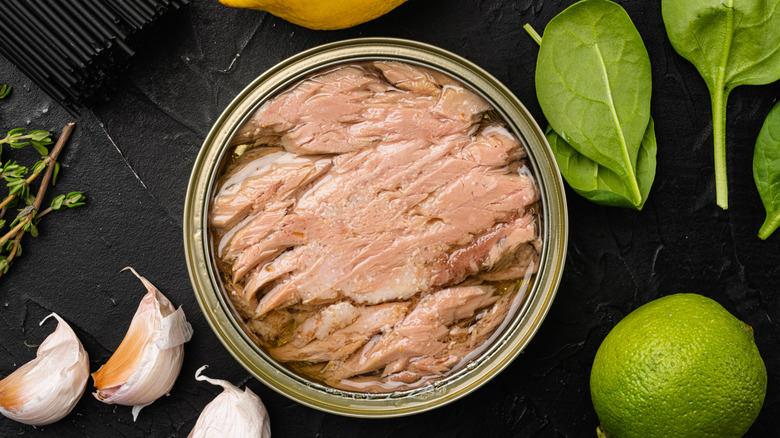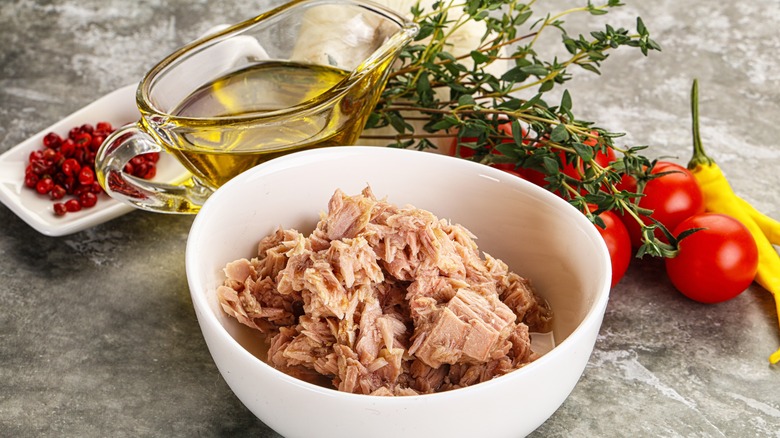When To Choose Oil-Packed Vs Water-Packed Canned Tuna
We are big fans of canned tuna. Whether you use it to make a quick tuna salad sandwich for lunch or incorporate it into your favorite pasta dish, there are a multitude of easy and delicious canned tuna recipes out there. With so many different types of canned tuna available, selecting the right one can be a daunting experience. Bluefin versus albacore, farmed versus wild-caught, yellowfin versus skipjack, not to mention wondering if it's dolphin-safe or Marine Stewardship Council certified. While those are choices to be made when considering budget and personal preferences, one of the easier decisions to make in the grocery store aisle is when to choose oil-packed versus water-packed canned tuna.
In terms of nutritional differences between canned tuna in water versus oil, water-packed tuna retains more of its omega-3s, while oil-packed tuna has higher levels of selenium and vitamin D. Whichever packing you choose, tuna is high in protein as well as other vitamins and minerals, but it should be consumed in moderation due to its sodium content and potential mercury content.
Since both are beneficial in their own ways, choosing one over the other depends on what recipes you're looking to make. Opt for oil-packed canned tuna when you're not altering it much and basically having it as is. Reach for the water-packed variety when you're planning on heavily dressing up the tuna with other ingredients.
How to use oil- or water-packed tuna in recipes
When selecting oil-packed tuna, look for tuna packed in extra-virgin olive oil because you can reuse the oil knowing it's of higher quality and works great for fresh applications like salad dressings or drizzling on top of finished dishes. It's also perfect for recipes that call for olive oil or when you're using it in a more straightforward way, such as on a toasted slice of crusty sourdough bread topped with a squeeze of lemon and chopped fresh parsley. When making a lighter dish like a colorful Niçoise salad, oil-packed is ideal so the richness of the tuna in oil can shine through to complement the briny olives and tangy Dijon dressing.
Water-packed canned tuna generally has a more pronounced tuna flavor since it doesn't have to compete with oil on your tastebuds. If a recipe for tuna has a lot of additional seasonings, water-packed is a good choice because it's more of a blank canvas. Some of the absolute best additions to canned tuna are mayonnaise, fresh herbs, acids like vinegar, lemon, or hot sauce, as well as mustard and even pickles. If you're making tuna salad, water-based allows you more room to play around with adding your own fats like mayonnaise, ripe avocado, or olive oil.
The next time you're looking for ways to transform canned tuna into a gourmet meal, you'll be able to choose the right oil or water-packed tuna to best serve your recipe.

